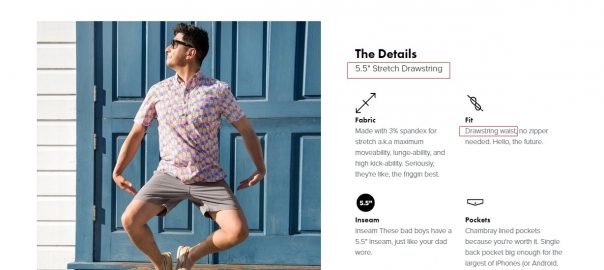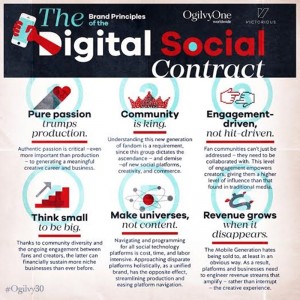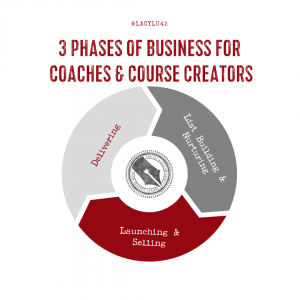When it comes to increasing your organic eCommerce traffic, SEO for product descriptions is vital. A good SEO strategy isn’t stuffing your product pages full of keywords and hoping for the best. It should be a strategic plan that speaks directly to your potential shopper while also being optimized for search engines.
You can technically optimize your product pages perfectly, but it means nothing if people aren’t clicking your listings or are clicking them and finding zero value. At the same time, you can write compelling, high-value product descriptions, but they are pointless if you aren’t getting eyes on your pages. In short, the perfect strategy for SEO for product descriptions is a multi-directional balancing act.
Important Note: Another very crucial aspect of SEO is how traffic behaves on your store. If shoppers are clicking through to a product page from an organic search and they spend a reasonable amount of time on the page or your site – and even better, buy the product – then Google sees your page as being highly relevant to what the person searched, which in turn improves your rankings for that product page. Needless to say, if they click through and immediately click out again due to poor product page design, irrelevant information, or product descriptions that don’t speak to them or their needs – this hurts your rankings for these pages. This is why, when it comes to SEO for product descriptions, a lot of your optimization doesn’t lie in fancy technical optimization, but in creating product pages that speak to your shoppers while ensuring your copy is relevant to the meta descriptions that got those shoppers there.
In this guide on SEO for product descriptions and pages, we give you the exact steps you should follow to achieve just that: the perfect balance between appealing to both bots and humans.
Let’s jump right in!
Step 1: Do a Full Technical Audit of Product Page and Store
First, you want to ensure you have done the tech work for product page SEO. In simple terms, this means you have reviewed your one-page optimization, as we discussed in our DIY SEO Tips and Hacks, for every single one of your product pages. If you have worked hard to create a good shopping experience for potential customers, you’ve probably already ensured your pages are optimized. Here is a list of elements to optimize in your product pages to ensure your site is technically optimized for search engines.
- Optimized meta descriptions and titles
- Alt text for all product photos and lifestyle content images and icons
- Internal links to other URLs (FAQs, T&Cs, related products, reviews, etc.)
- H1, H2, or H3 tag keywords
- A responsive, well-designed page
- User-friendly, short URLs
- Main keywords or phrases used in product page titles
- Secondary keywords used in product descriptions
Technical audits for product pages can seem like a daunting task, but they are vital. We suggest that you start by doing an overall technical audit of your store. This can be done quickly, for free, in a matter of minutes using the Benchmark Hero tool. Benchmark Hero provides a host of insights on technical performance, product description optimization, and overall shopping experience.
Pro Tip: You will want to ensure that you review every meta description, title, and keyword for your most popular products first. This can be done while following the product decision audit steps in this guide to SEO for product descriptions.
Step 2: Go Back to Your Key eCommerce Foundation – Your Target Audience
Before we can look at optimizing your product descriptions for SEO, you need to go back to your core target audience. Why is this important for SEO? As we mentioned, the perfect SEO strategy is optimized for both search engines and your shoppers. To ensure the latter, you need to go back to your target audience to make sure you’re creating product descriptions that speak directly to them.
Here’s the thing: it is not enough to create and define your overall key audience, especially if you’re selling products that cover a wide range of categories. Let’s say you have an online clothing brand selling both men’s and women’s fashion; you will want to segment your target shoppers into these two groups. Although your overall brand voice and tone will be the same for all your segments, the terminology, slang, and even keywords will differ between segments.
A simple place to start is segmenting your target audience by demographics, psychographics, behavior, and geography. However, to truly ensure you are creating SEO-optimized product descriptions, you will also want to deep-dive into your conversion, traffic, and customer data. Assess which segments are showing interest in which products, what similarities and differences converting shoppers have, which products are getting the best traffic, and what elements they have in common.
Step 3: Do a Complete Product Description Content Audit
Now that you have audited your basic one-page optimization, store’s technical performance, and target market segments, it’s time to roll up your sleeves and get into the real nitty-gritty of your product page optimization: your product description audit. We’re not talking keywords just yet, but your overall product title and description copy. Here are some essential questions to ask when reviewing and tweaking your product descriptions, and tips on how to rewrite your product descriptions according to best SEO practices.
1. Are Your Product Descriptions Written for Humans and Optimized for Bots?
The first and most important thing to remember when creating your product descriptions is that you may be optimizing for search engines, but you’re writing for humans. While placing the right keywords in the right places will bring you impressions and optimizing your meta titles and descriptions will bring you clicks, it’s how you lay out and write your product descriptions – for your actual shoppers (AKA humans) – that brings you sales. This doesn’t mean you need to get too fancy; it’s about being clear and on-brand in terms of tone, answering all questions a potential customer may have about your product in your product descriptions, and ensuring you are using terminology and slang that speak to the segment your product is targeting. Here’s a simple example from one of our merchants, Dressxox.
![Boost Traffic with SEO for Product Descriptions and Pages [Step-by-Step Guide] Boost Traffic with SEO for Product Descriptions and Pages [Step-by-Step Guide]](https://www.onlinesalesguidetip.com/wp-content/uploads/2020/09/01-Boost-Traffic-with-SEO-for-Product-Descriptions-and-Pages-Step-by-Step-Guide.jpg)
2. Are You Sticking to Your Brand Voice to Stand Out?
As we mentioned, tone is important. Why? Because it helps you create unique product descriptions that don’t just match your branding but stand out from your closest competitors. In fact, the uniqueness and originality of your product decisions are a big part of SEO. What you don’t want to do, as tempting as it may be if you are adding a lot of products a week, is copy and paste your descriptions for different but similar products and then just change a word here and there. Instead, you want to create product descriptions for every product using your brand voice, key features, and target segment as a guide.
3. Are You Emphasizing Your Key Product Features?
Whether your testing shows you to go with a long description or bullet points for product descriptions, you need to make sure you are emphasizing your key product features. The features that addresses your potential customer’s pain point or passion. In other words, every product description needs to include its unique selling point. An excellent example of an eCommerce brand winning at this is Conscious Step. This top eCommerce brand not only manages to highlight the top feature – the charity their product supports – in a way that appeals to their target audience and stays true to their brand, but includes the actual product specifications vital for highlighting the quality of the product.
![Boost Traffic with SEO for Product Descriptions and Pages [Step-by-Step Guide] Boost Traffic with SEO for Product Descriptions and Pages [Step-by-Step Guide]](https://www.onlinesalesguidetip.com/wp-content/uploads/2020/09/02-Boost-Traffic-with-SEO-for-Product-Descriptions-and-Pages-Step-by-Step-Guide.jpg)
There is something else they manage to do with each of their product descriptions, and that is to tell a story; which brings us to the next question.
4. Does Your Product Description Tell a Story?
As you can see from the example above, storytelling can be a powerful way to engage your potential shopper to firstly, keep them on the page, but more importantly, purchase your product. This can be as simple as outlining how your shopper can use your product in your descriptions, like this Halloween leggings product description from GearBunch.
![Boost Traffic with SEO for Product Descriptions and Pages [Step-by-Step Guide] Boost Traffic with SEO for Product Descriptions and Pages [Step-by-Step Guide]](https://www.onlinesalesguidetip.com/wp-content/uploads/2020/09/03-Boost-Traffic-with-SEO-for-Product-Descriptions-and-Pages-Step-by-Step-Guide.jpg)
See how they suggest to their potential shoppers how, and with what, they can wear this product to make it the perfect Halloween outfit? That’s storytelling.
5. Are You Staying True to Your Product?
Last but not least, you want to make sure that your product descriptions are realistic. There is a very fine line between getting creative with your product description copy and exaggerating. Not only does this harm your first overall brand impression, site trustworthiness, and relevancy, but it can lead to a lot of unhappy customers and bad product reviews. For example, if you’re a brand new online store, you shouldn’t claim your products are top of your niche. Instead, highlight specific features your products have that your biggest competitors don’t have, without making over-the-top claims that don’t seem trustworthy or realistic.
Step 4: Break Up Product Descriptions for Easy Reading
Have you noticed a key similarity between the eCommerce product description examples we have shown you so far? Each of them has found a way to break down their product descriptions for easy reading. That allows them to include all relevant information, which helps with SEO optimization, without the risk of boring your traffic and then having them bounce off your product page too soon.
When it comes to SEO for product descriptions, find the balance between keeping your descriptions simple and straightforward – to ensure potential shoppers can quickly and easily get the information they need about your product – while ensuring that you have not excluded vital information. You also want to ensure you are presenting your product information in a format that your target audience specifically prefers. There are two ways to do this.
- You can break up your product descriptions as the previous examples have shown, including both long-form and bullet points that not only make them easy to read but present two types of information format options for browsers to choose from based on their preferences.
- You can run A/B tests for product pages, using either bulleted or long-form content, and then adapt all your product pages to the format your audience engages with better.
We have merchants who do either-or, and this is not set in stone. It totally depends on your brand, niche, and audience and how they prefer to engage with content. Here’s an example of a long-form description from Icklebubba.com.
![Boost Traffic with SEO for Product Descriptions and Pages [Step-by-Step Guide] Boost Traffic with SEO for Product Descriptions and Pages [Step-by-Step Guide]](https://www.onlinesalesguidetip.com/wp-content/uploads/2020/09/04-Boost-Traffic-with-SEO-for-Product-Descriptions-and-Pages-Step-by-Step-Guide.jpg)
Step 5: Reassess Your Product Description Length
Your product description length is another key ingredient to a winning product description SEO strategy, and it is not as clear-cut as you may think. There is no magic product description length guaranteed to get you good organic traffic. You need to weigh your product specifics against your buyers’ needs and preferences – needs and preferences that will change depending on what stage of the buying journey they are at or what specific product they are interested in.
As we mentioned, it’s essential to include the important features. For some products, this list will be short; for other, more involved products such as laptops or other electronics, this will be long. A potential shopper searching for a laptop will also naturally have much more specific needs, wants, and questions about the product than someone looking for a pair of socks, with the latter having a much shorter shopping journey than the former. Here’s an example from LookHuman.
![Boost Traffic with SEO for Product Descriptions and Pages [Step-by-Step Guide] Boost Traffic with SEO for Product Descriptions and Pages [Step-by-Step Guide]](https://www.onlinesalesguidetip.com/wp-content/uploads/2020/09/05-Boost-Traffic-with-SEO-for-Product-Descriptions-and-Pages-Step-by-Step-Guide.jpg)
Therefore, when considering the length of your product description, it’s less about including unnecessary text to fill space and stuff keywords, and more about creating the optimum product description length best suited for your brand, products, and audience. For those of you selling in various product categories, there is also a big chance that you will naturally need to vary your product length.
Simply put, if you’re selling a simple product on your store, put the essential information, your keywords, and write for the shopper – not bots – and yes, the length will likely be on the shorter side, but it will be optimized.
That doesn’t mean you can just write a one-phrase description; all products, even the simplest ones, will have features you need to highlight. Take a look at Hyperion Herbs’ product descriptions. Although they keep their descriptions short (above the fold) and to the point, appealing to their target shopper, they also cleverly add a closeup of their product label, giving additional information in a very easy-to-digest way.
![Boost Traffic with SEO for Product Descriptions and Pages [Step-by-Step Guide] Boost Traffic with SEO for Product Descriptions and Pages [Step-by-Step Guide]](https://www.onlinesalesguidetip.com/wp-content/uploads/2020/09/06-Boost-Traffic-with-SEO-for-Product-Descriptions-and-Pages-Step-by-Step-Guide.jpg)
However, below the fold, they have included every aspect of their product.
![Boost Traffic with SEO for Product Descriptions and Pages [Step-by-Step Guide] Boost Traffic with SEO for Product Descriptions and Pages [Step-by-Step Guide]](https://www.onlinesalesguidetip.com/wp-content/uploads/2020/09/07-Boost-Traffic-with-SEO-for-Product-Descriptions-and-Pages-Step-by-Step-Guide.jpg)
This shows how you can make use of simple, easy-to-digest and more detailed product descriptions together on one page.
When it comes to using a buying journey to determine length, let’s use the example that you’re about to add a completely unique product to your store, aimed at a relatively new market. Any potential buyer who clicks through to your product page will have low awareness and therefore need more convincing. A simple, no-effect product description is not going to cut it. You need to fully describe your product, raising their level of awareness enough to get them to buy. Here’s an excellent example from Autoslide.
![Boost Traffic with SEO for Product Descriptions and Pages [Step-by-Step Guide] Boost Traffic with SEO for Product Descriptions and Pages [Step-by-Step Guide]](https://www.onlinesalesguidetip.com/wp-content/uploads/2020/09/08-Boost-Traffic-with-SEO-for-Product-Descriptions-and-Pages-Step-by-Step-Guide.jpg)
Therefore, to ensure your product description length is on-point, you should:
- Make sure you have included all important features and specs for your product
- Put effort into describing your product for shoppers
- A/B test your product descriptions and formatting (bullets/no bullets, headers/no headers, etc.) to find the optimal product description length
Step 6: Place the Right Keywords, Strategically
Yes, keywords are definitely an essential step in optimizing your product descriptions for SEO, but it’s important to create them for your shoppers first. This will help ensure you are creating them in a way more likely to convert first, and then you can tweak then slightly, with the right keywords, to get more eyes on them. This is not just about inserting keywords but also taking out keywords that are hurting your rankings.
In most cases, the best keyword or phrase will be the product name itself and a longtail keyword. It is also very likely that if you have optimized your product descriptions as per the first five steps, your keyword will naturally appear in your titles and descriptions. Let’s look at an example from Coastal Scents. By including all the relevant features of their product and writing a simple yet appealing product description, they naturally have primary and secondary keywords and phrases in their copy.
![Boost Traffic with SEO for Product Descriptions and Pages [Step-by-Step Guide] Boost Traffic with SEO for Product Descriptions and Pages [Step-by-Step Guide]](https://www.onlinesalesguidetip.com/wp-content/uploads/2020/09/09-Boost-Traffic-with-SEO-for-Product-Descriptions-and-Pages-Step-by-Step-Guide.jpg)
Now let’s take a look at leading Shopify Plus store Chubbies. As you can see, they also have a natural keyword strategy, with variations – based on the features of the product.
![Boost Traffic with SEO for Product Descriptions and Pages [Step-by-Step Guide] Boost Traffic with SEO for Product Descriptions and Pages [Step-by-Step Guide]](https://www.onlinesalesguidetip.com/wp-content/uploads/2020/09/10-Boost-Traffic-with-SEO-for-Product-Descriptions-and-Pages-Step-by-Step-Guide.jpg)
![Boost Traffic with SEO for Product Descriptions and Pages [Step-by-Step Guide] Boost Traffic with SEO for Product Descriptions and Pages [Step-by-Step Guide]](https://www.onlinesalesguidetip.com/wp-content/uploads/2020/09/11-Boost-Traffic-with-SEO-for-Product-Descriptions-and-Pages-Step-by-Step-Guide.jpg)
We really can’t stress enough that you definitely don’t want to stuff your product descriptions full of keywords and phrases. This will not only undo all the work you have just done to create converting product descriptions and give a very spammy impression, but will have the opposite effect on your rankings. Keyword-stuffing is actually easier to do than you think, especially for those shorter product descriptions. Instead, you should be putting your primary keyword or phrase in strategic places. This is where your keyword focus should be, placing it only once in the following elements of your product pages:
- Page URL
- Description title
- Product description (twice for longer descriptions)
- Alt image tag
- Meta title and description
You will also want to research secondary keywords that you can integrate into your product descriptions, to help boost traffic of people who are actually shopping for what you’re selling. But remember, they should look natural in your description and be used sparingly.
Step 7: Check for Duplicates
The last important aspect of SEO for product descriptions and your entire store is ensuring you do not have duplicate content. Search engines penalize your overall rankings for duplicate content, therefore every product description must be unique.
In short, you can’t use the same product descriptions and just swap out a few words. Also, with the sheer volume of pages that comes with having a robust online store that includes many categories, keeping all your product descriptions original can feel like an uphill battle.
If for any reason, you have two very similar products that you can’t write uniquely, you will want to use the no-index meta tag for that page – that is, a tag that will prevent Google from crawling and indexing the page, essentially skipping it.
![Boost Traffic with SEO for Product Descriptions and Pages [Step-by-Step Guide] Boost Traffic with SEO for Product Descriptions and Pages [Step-by-Step Guide]](https://www.onlinesalesguidetip.com/wp-content/uploads/2020/09/12-Boost-Traffic-with-SEO-for-Product-Descriptions-and-Pages-Step-by-Step-Guide.jpg)
How do you check for duplicate content? There are a lot of free tools, such as Siteliner, to check for duplicate content and they are a good place to start.
![Boost Traffic with SEO for Product Descriptions and Pages [Step-by-Step Guide] Boost Traffic with SEO for Product Descriptions and Pages [Step-by-Step Guide]](https://www.onlinesalesguidetip.com/wp-content/uploads/2020/09/13-Boost-Traffic-with-SEO-for-Product-Descriptions-and-Pages-Step-by-Step-Guide.jpg)
—
Final Thoughts
When it comes to eCommerce SEO, the trick is to create content for your shoppers first and foremost, and then optimize and tweak for search engines. Product descriptions are no different. If you focus too much on bots, you risk harming rather than helping your rankings while also alienating your target shopper! Therefore, SEO optimization doesn’t exist in a bubble; it is the tweaks you make after implementing your strategies to improve your conversions and upgrade your branding and create a streamlined customer experience.
Have product description SEO questions? Post them in the comment section below.
Digital & Social Articles on Business 2 Community
(49)







